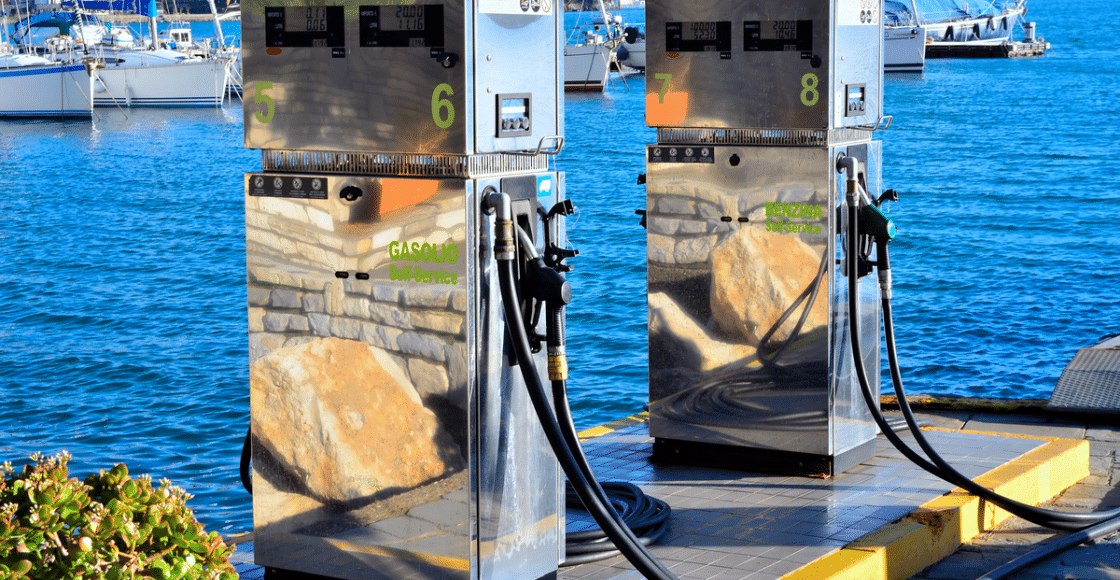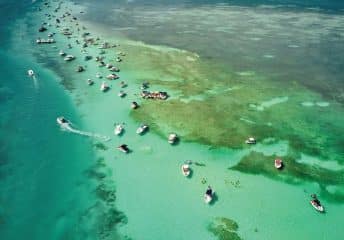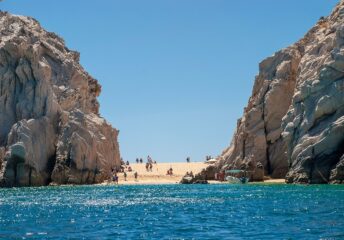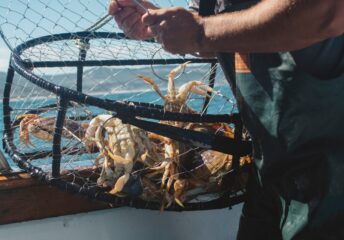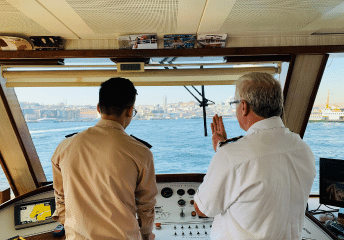What Should You Do Before Fueling Your Boat? Boat Fueling Tips
Last Updated on July 28, 2023 by Boatsetter Team
Boating is enjoyable but has facets that can be very dangerous. Fueling is a boating activity that requires you to follow specific procedures to keep you, your vessel, and your crew safe.
When fueling, you need to be cautious of your boat, passengers, and other vessels around you. A fueling dock can be a busy place, and if you have a plan before you arrive, fueling should be nothing more than a few minutes lost on the water.
The following is a simple fueling plan that should keep you, your boat, and passengers safe when fueling.
What to do before fueling your boat
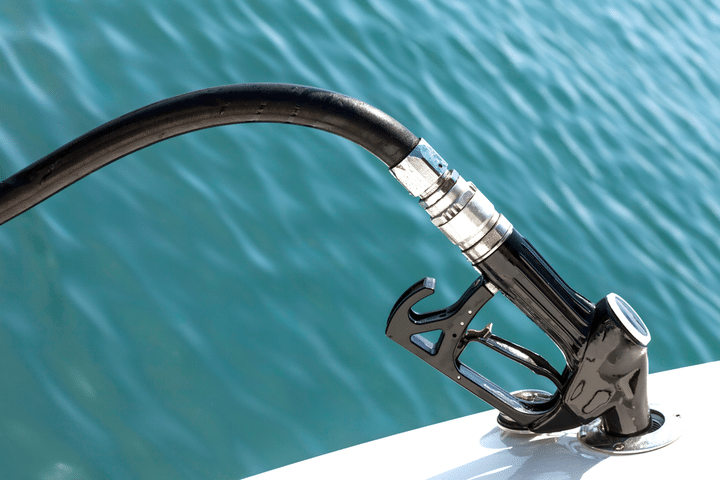
Accidents can occur at a fuel dock due to traffic and unsafe fuel practices. So, you need to be aware of what you are doing, pay attention to other boats and your crew. Before fueling, be sure you know where your fire extinguisher is in case you need it.
- Securely tie your boat to the fuel dock, and then have your crew disembark.
- There should be no smoking at all around the fuel dock. No matches, lighters, or electronic devices should be used when on the fuel dock.
- Inspect the fuel lines, vents, and connections are in good condition.
- Turn off everything electrical on your boat. That means bilge pumps, air conditioners, lights, the engine, and anything else that might create a spark.
- Shut off all fuel valves for propane tanks.
- If your boat has a cabin, then close all hatches, doors, and windows so that fuel vapors don’t enter this space while fueling.
- If you have portable fuel tanks, then you can remove them from your boat and fuel them on the dock if you choose.
- Larger boats have onboard tanks that can’t be removed, and your boat will be filled much like an automobile through a port in the deck.
What to do while fueling your boat
Static electricity can produce a spark that will cause gas fumes to ignite. So, while fueling your boat, use the following best practices to stay safe.
- When filling the fuel tank, keep the fuel nozzle in complete contact with the fuel fill tube. This measure will prevent a spark.
- Don’t get in a hurry because any fuel burped from a tank onboard will need to be cleaned up. Remember, spilled fuel ends up in the bilge, and that’s another problem.
- Never fill your fuel tanks over 90 percent full.
- If you do have a fuel spill on board, clean it up. Clay-type kitty litter works well to clean up fuel and oil spills.
- Speaking of oil, now is an excellent time to check it out, too. Unless that is, you need to mix oil with your fuel. Don’t forget that either for you two-stroke owners. It can make for a bad day.
Why should a boat’s gas tank never be completely filled?
Never fill your boat’s fuel tank above 90 percent of its capacity, lest you have a mess. This is because fuel expands, and when it does, it can run from your fuel tank and into the bilges. This creates an unsafe condition for you and your boat.
Nine of ten boats sink at the dock, and to keep from being one of those statistics, practicing safe fueling will ensure that your day on the water is fun-filled instead of frightful.
A Boating Best Practice about fuel consumption
There is a ‘rule of three’ in finance that helps one manage one’s money. Well, there is also a ‘rule of three’ in the yachting world concerning your boats’ fuel capacity and range.
When you go out, you need to remember that you need to get back, too. Unfortunately, there’s not a fuel dock at every point, so you must be prepared when going out on the water. The rule of thumb is to plan your fuel consumption as follows:
- You will need a third of your fuel for your outbound trip.
- You will need a third of your fuel for your inbound trip.
- And you will need a third of your fuel for emergencies.
If you follow this practice, running out of fuel shouldn’t be a problem. However, if you have a mechanical problem, then you call Sea Tow.
What to do once you have fueled your boat
Now that you’re fueled, you need to open your boat back up if it has a cabin and vent the vessel of any lingering fumes. Many boats have outboard motors, and the tanks are removable, although some will have built-in tanks due to their size.
- Make sure the fuel caps are tight so that water can’t get into your fuel.
- Clean up any fuel that you spill, even if it’s just a drop.
- Vent the bilges of your boat. Larger vessels have bilge fans, and the controls are generally noted on the helm. After fueling turn, the bilge exhaust fans on and leave them on for a few minutes before you fire up your engines.
- Go below and check the cabin and engine room for any lingering fumes and then you can fire up your engines, invite your crew back aboard, and be on your way.
It is easier to fuel a boat with a portable tank unless you spill fuel on your boat. Although you still need to care when filling smaller tanks because even the most minor spills need to be cleaned up.
Fumes can build up in the bilge of larger vessels when fueling and need to be given time to evaporate before the engines are started.
Many newer boats are equipped with a gas vapor detection sensor that takes the guesswork out of whether it is safe to start your engine.
Fueling Small boats and Personal Watercraft
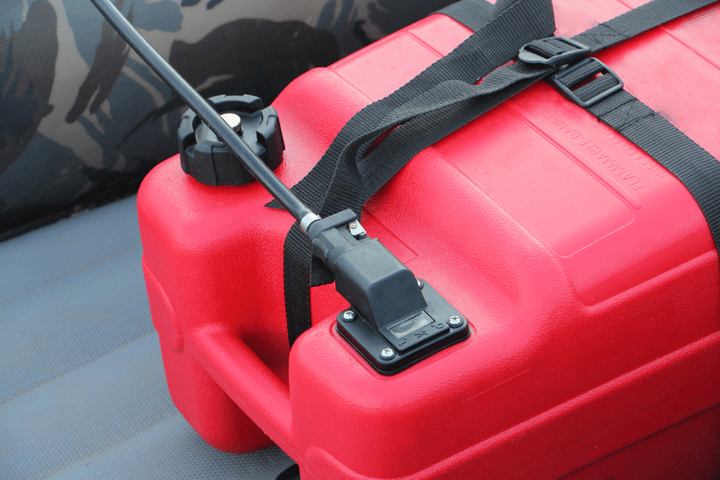
Most small boat owners fill their fuel tanks on their way to the boat ramp because it’s the easiest thing to do however if you have a small boat or PWC and need to fuel while on the water, you must follow the same best practices as listed above.
Dinghies, small skiffs, bass boats, and flats boats don’t need 100-gallon plus fuel tanks. Instead, they generally have small removable fuel tanks. Therefore, if you find you need the service of a fuel dock, then you remove the fuel tanks and fill them at the pump. Then, when you are done, they go back on the boat, and you’re on the way.
PWC’s, however, have a built-in tank, and you need to take the same precautions as if you are in a big boat with inboard motors. When filling a PWC with fuel, vapor can settle in its bilge, too. Use the opportunity when fueling to check fuel lines, and be sure that there is no fuel in the bilge before and after fueling.
Use a boating fuel stop as a pit stop!
Not all boats have heads (onboard toilets), but most marinas do, and fuel docks are often at marinas. Other items offered at marinas are convenience items, prepared food, water, ice, and other novelty items.
Not everyone packs everything they need for a day on the water. Marinas and fuel stops often offer the sundry items you might need on a boating adventure. Not all marinas offer food or sundries, though, and you can make an adventure of where to buy gear in more remote locations.
However, a venue that caters to boaters knows what we need when we’re on the water and does its best to cater to us—no matter what waterway you are exploring.
Now you know how to fuel a boat, but do you have one to fuel? We do, and you can rent a boat through Boatsetter near where you live or at one of the many places across the world. From small fishing boats to yachts, captained or not, Boatsetter members can cater to your desire to fish, ski, or merely sightsee along the waters of the world.

Boatsetter empowers people to explore with confidence by showing them a world of possibility on the water. Rent a boat, list your boat, or become a Boatsetter captain today.
